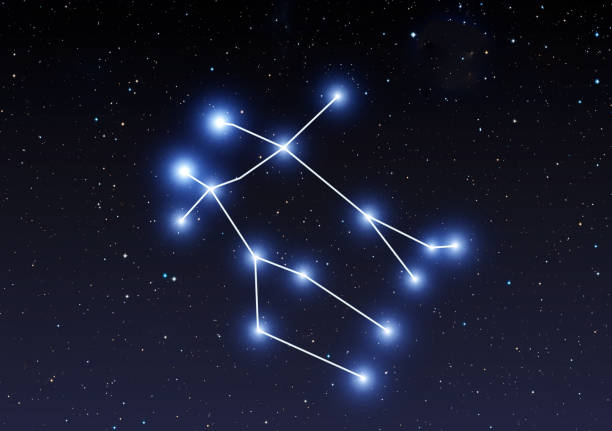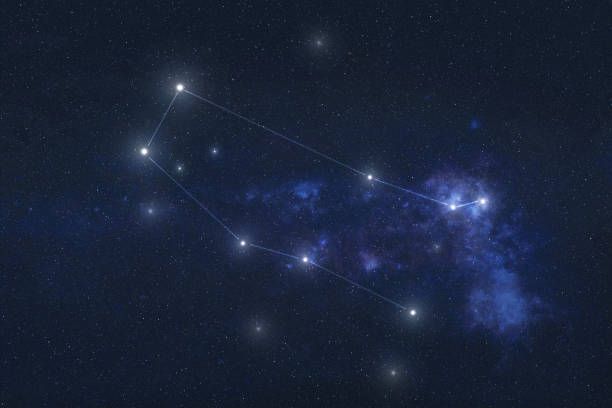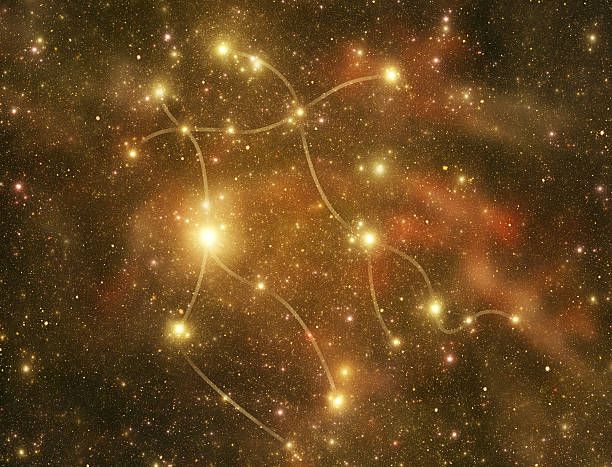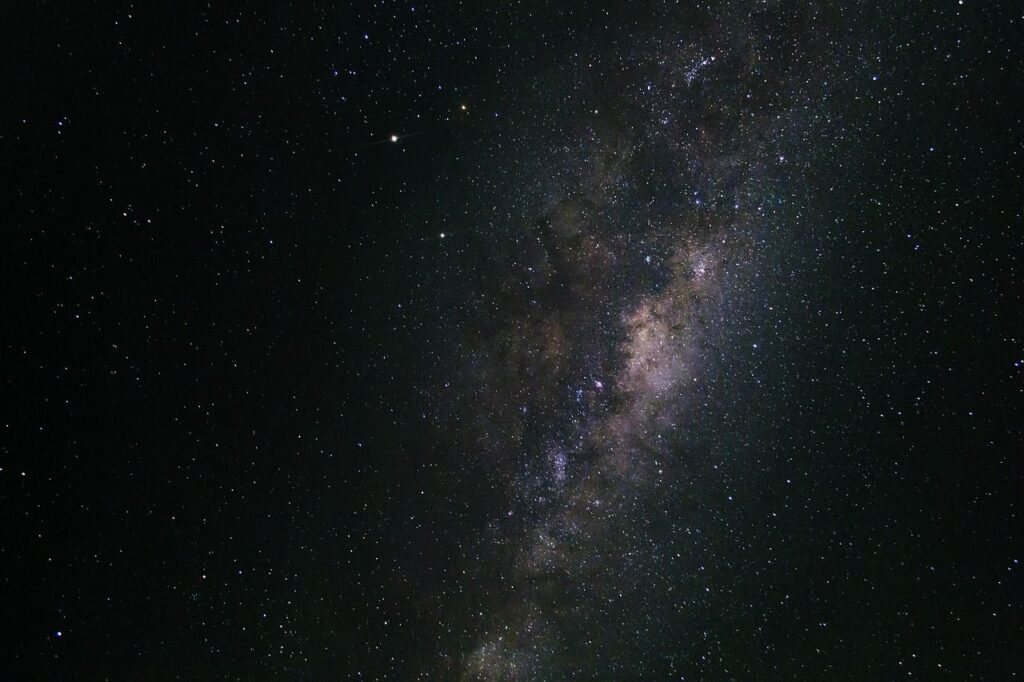
Exploring the Enigma: 10 Weird and Wonderful Facts About the Gemini Constellation
🖊️ By Roohi Jaan
✅ Fact checked by Mir Afzal
Exploring the Enigma: 10 Weird and Wonderful Facts About the Gemini Constellation
As we humans gaze up at the night sky, the celestial wonders unfold like a mesmerizing tale, and one constellation that takes center stage during Gemini season is none other than Gemini itself. Beyond the familiar Twins, Castor and Pollux, lie a myriad of unbelievably fascinating facts that add layers of intrigue to this stellar spectacle. Join me on a celestial journey as we curiously uncover 10 weird and wonderful facts you probably didn’t know about the Gemini constellation.

1. The Dynamic Duo: Castor and Pollux, the Celestial Twins
At the heart of the Gemini constellation dance Castor and Pollux, the mythological twins immortalized in the stars. These beautiful luminous siblings are not just a random pair; they represent the duality of nature, embodying both mortal and divine aspects. Castor, the mortal, was a skilled horseman, while Pollux, the immortal, was a mighty boxer. While some believe this duality reflects traits associated with the astrological sign Gemini, it’s fortunately or unfortunately important to note that astrology remains a non-scientific belief system.
2. Celestial Shape-Shifter: Gemini’s Ever-Changing Form
Unlike some constellations with fixed shapes, Gemini boasts a unique quality – its form clearly appears to morph over time. Due to the Earth’s axial precession, the position of stars changes slowly and gradually, causing the celestial twins to seemingly shift their positions. This celestial dance, barely perceptible in a human lifetime, adds a dynamic element to the Gemini constellation, inviting us to ponder the cosmic ballet of the heavens.
3. Zodiac Connection: Gemini Links Past and Present
Gemini is not just a standalone constellation; it serves as a bridge between the ancient and modern. In the zodiac, this celestial pair represents the astrological sign of the Twins, symbolizing duality and balance. Some people are of the belief that the sign influences those born under it, fostering curiosity, adaptability, and a love for communication. Whether you ascribe to astrology or not, the connection between Gemini and the zodiac is undeniably interesting.

4. Intergalactic Twins: Earth-Sized Exoplanets in Gemini
In a cosmic twist, the Gemini constellation is linked to the discovery of two Earth-sized exoplanets, Kepler-8b and Kepler-9b. These very distant worlds orbit stars within the constellation, raising the exciting possibility of finding habitable planets beyond our solar system. While these planets may not host celestial twins like Castor and Pollux, their discovery highlights the ongoing quest to uncover the mysteries of the cosmos.
5. Ancient Origins: Gemini in Babylonian Mythology
Travel back in time to ancient Babylon, where the initial roots of Gemini’s mythology entwine with the tales of Gilgamesh, Enkidu, and the great Bull of Heaven. The Babylonians associated the constellation with these legendary figures, attributing celestial significance to the Twins’ symbolic representation of friendship and companionship. Delving into these ancient narratives further adds a layer of cultural richness to our understanding of Gemini’s enduring legacy.
6. Cosmic Clones: Gemini’s Stellar Siblings
Gemini isn’t the sole constellation with celestial siblings, but its neighboring twins are not to be overlooked. To the west, we find the constellation of Cancer, representing the Crab, and to the east, we encounter Taurus, the Bull. These neighboring constellations create a cosmic trio, showcasing the interconnectedness of the night sky. Observing Gemini in the context of its stellar neighbors invites us to appreciate the vast celestial tapestry that unfolds above us each night.
7. Supernova Remnants: Gemini’s Explosive Legacy
Deep within the Gemini constellation lies the remnants of a celestial explosion – a supernova. This cosmic event, known as IC 443 or the Jellyfish Nebula or Rosette Nebula, is a sprawling cloud of gas and dust resulting from a stellar explosion. The nebula’s composition of hydrogen, oxygen, and other elements reveals clues about the star’s life and death, offering a glimpse into the life cycles of stars and the transformative nature of cosmic events.
8. Celestial Teardrops: The Twin Stars’ Distinctive Colors
As we turn our gaze to Castor and Pollux, we notice a striking difference in their hues. Castor, the fainter of the two, gleams with a subtle white radiance, while Pollux, the brighter twin, emits a warm orange glow. These distinct colors are a consequence of their varying temperatures and compositions. Castor, a hot, blue star, shines with a higher energy, while Pollux, a cooler, yellow giant, emits a more reddish light. Observing these celestial teardrops invites us to appreciate the diversity within the Gemini constellation and the science behind the colors that paint the night sky.
9. Gemini’s Galactic Gateway: The Milky Way Connection
Look closely at Gemini, and you’ll notice its proximity to the luminous band of the Milky Way. This galactic gateway enhances the visual spectacle of the constellation, creating a celestial backdrop of the Milky Way. This galactic gateway enhances the visual spectacle of the constellation, creating a celestial backdrop that adds depth and dimension to our stargazing experience. The intertwining of Gemini with the Milky Way invites us to ponder our place within the vastness of our home galaxy and the countless stars it cradles.

10. Modern Exploration: Gemini Observatory’s Cosmic Eyes
In the spirit of contemporary exploration, the Gemini Observatory stands as a testament to humanity’s ongoing quest to unravel the mysteries of the universe. With its twin telescopes located in Hawaii and Chile, the observatory provides astronomers with a binocular view of the cosmos, capturing images with unprecedented clarity. These robotic eyes peer into the depths of space, studying not only Gemini but a range of celestial objects, from newborn stars to distant galaxies. The Gemini Observatory’s cosmic insights help us piece together the grand narrative of the universe, revealing connections between stars, galaxies, and even black holes.
A Personal Invitation to the Cosmos:
As we unravel the weird and wonderful facts surrounding the Gemini constellation, I extend a personal invitation to you. Step outside on a clear night, let your eyes adjust to the darkness, and gaze up at the celestial canvas above. Imagine the Twins, Castor and Pollux, weaving their stories through the cosmic tapestry. Consider the ancient myths, the scientific discoveries, and the timeless beauty that unfolds overhead. Whether you’re an ardent stargazer or a curious novice, there’s an undeniable allure to the mysteries hidden within the celestial twins. As we delve into these facts, let’s embrace the vastness of the universe and the endless possibilities that lie beyond our earthly realm. The Gemini constellation beckons, inviting us to connect with the cosmos and embark on a journey of discovery that transcends time and space.
Additional Resources:
- Gemini Observatory: https://www.gemini.edu/
- NASA: https://www.nasa.gov/
- International Astronomical Union: https://www.iau.org/
Conclusion:
In the realm of the Gemini constellation, we find a cosmic playground where mythology, science, and imagination converge. Whether you’re drawn to the captivating stories of the past, the awe-inspiring discoveries of the present, or the boundless possibilities of the future, the celestial twins offer a gateway to endless exploration. So, next time you find yourself under a starlit sky, take a moment to appreciate the wonders of Gemini and allow your curiosity to guide you on a journey through the cosmos.








